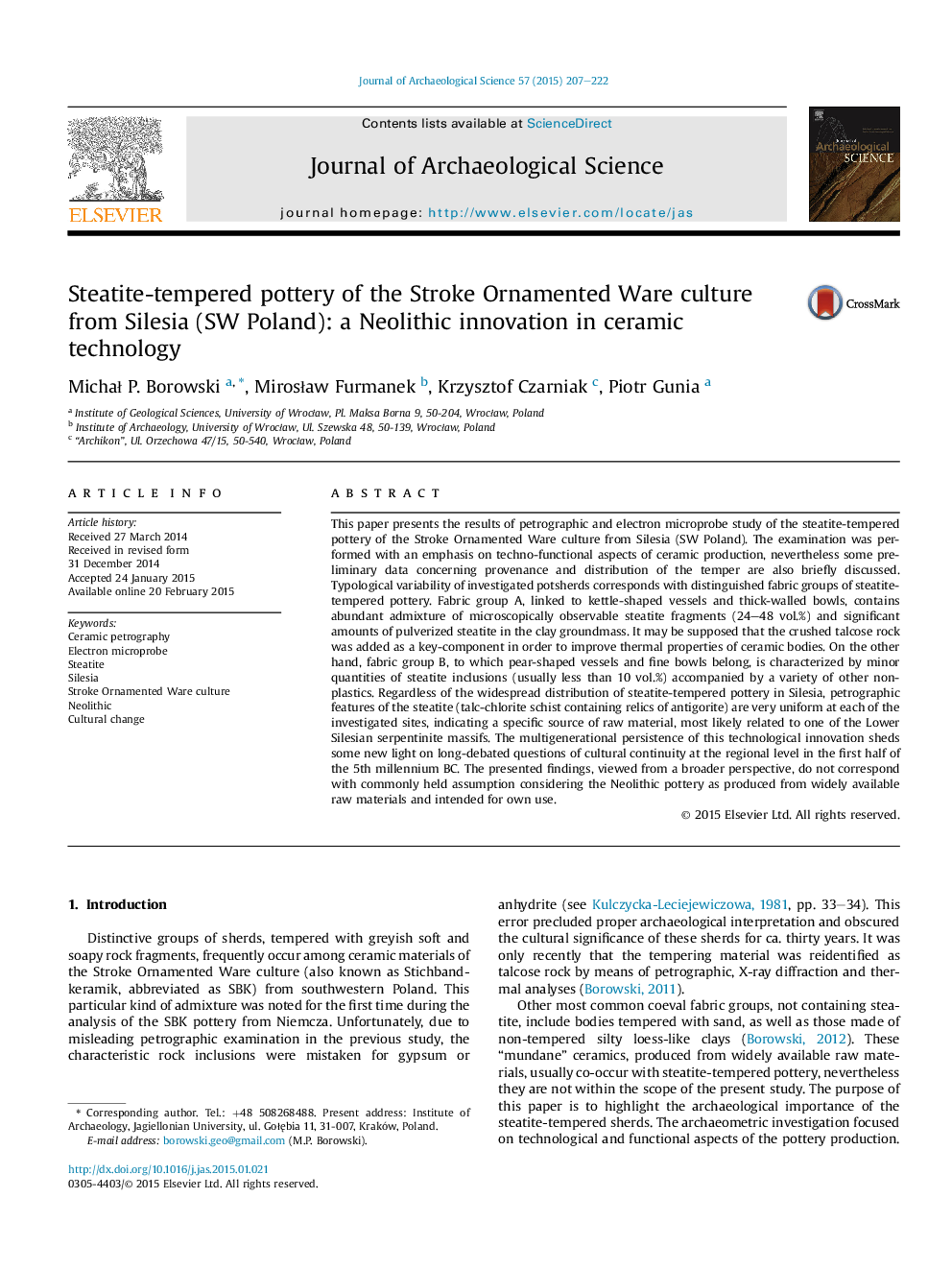| Article ID | Journal | Published Year | Pages | File Type |
|---|---|---|---|---|
| 7442049 | Journal of Archaeological Science | 2015 | 16 Pages |
Abstract
This paper presents the results of petrographic and electron microprobe study of the steatite-tempered pottery of the Stroke Ornamented Ware culture from Silesia (SW Poland). The examination was performed with an emphasis on techno-functional aspects of ceramic production, nevertheless some preliminary data concerning provenance and distribution of the temper are also briefly discussed. Typological variability of investigated potsherds corresponds with distinguished fabric groups of steatite-tempered pottery. Fabric group A, linked to kettle-shaped vessels and thick-walled bowls, contains abundant admixture of microscopically observable steatite fragments (24-48 vol.%) and significant amounts of pulverized steatite in the clay groundmass. It may be supposed that the crushed talcose rock was added as a key-component in order to improve thermal properties of ceramic bodies. On the other hand, fabric group B, to which pear-shaped vessels and fine bowls belong, is characterized by minor quantities of steatite inclusions (usually less than 10 vol.%) accompanied by a variety of other non-plastics. Regardless of the widespread distribution of steatite-tempered pottery in Silesia, petrographic features of the steatite (talc-chlorite schist containing relics of antigorite) are very uniform at each of the investigated sites, indicating a specific source of raw material, most likely related to one of the Lower Silesian serpentinite massifs. The multigenerational persistence of this technological innovation sheds some new light on long-debated questions of cultural continuity at the regional level in the first half of the 5th millennium BC. The presented findings, viewed from a broader perspective, do not correspond with commonly held assumption considering the Neolithic pottery as produced from widely available raw materials and intended for own use.
Related Topics
Physical Sciences and Engineering
Materials Science
Materials Science (General)
Authors
MichaÅ P. Borowski, MirosÅaw Furmanek, Krzysztof Czarniak, Piotr Gunia,
